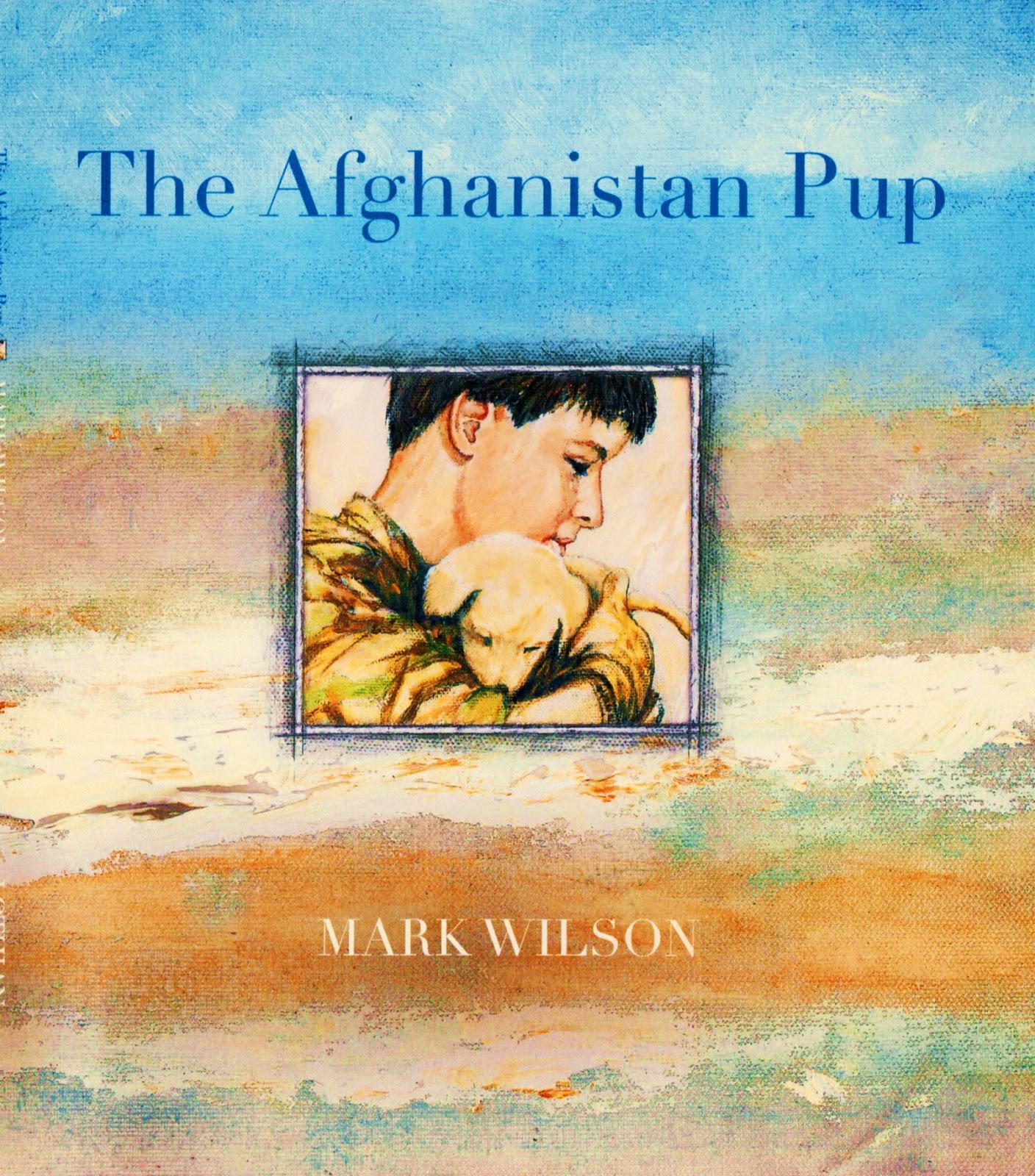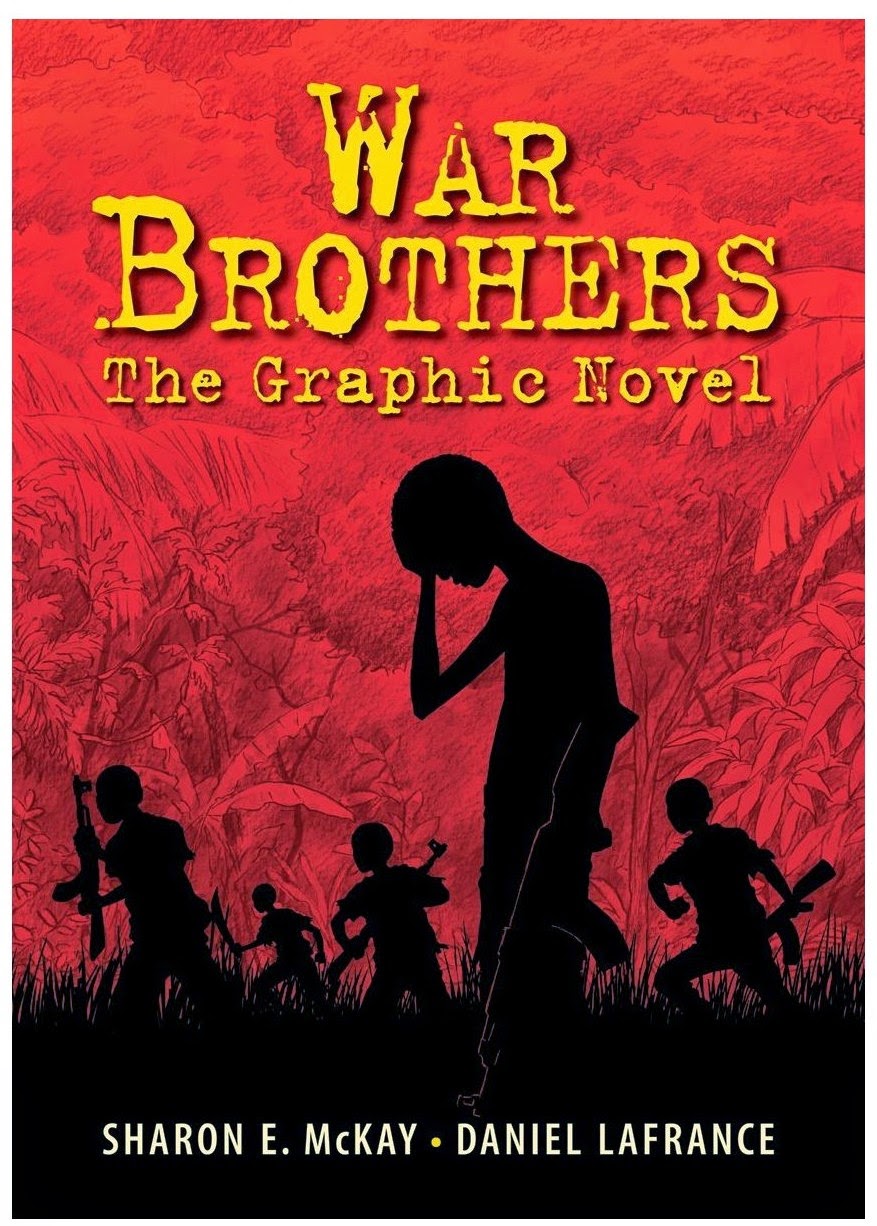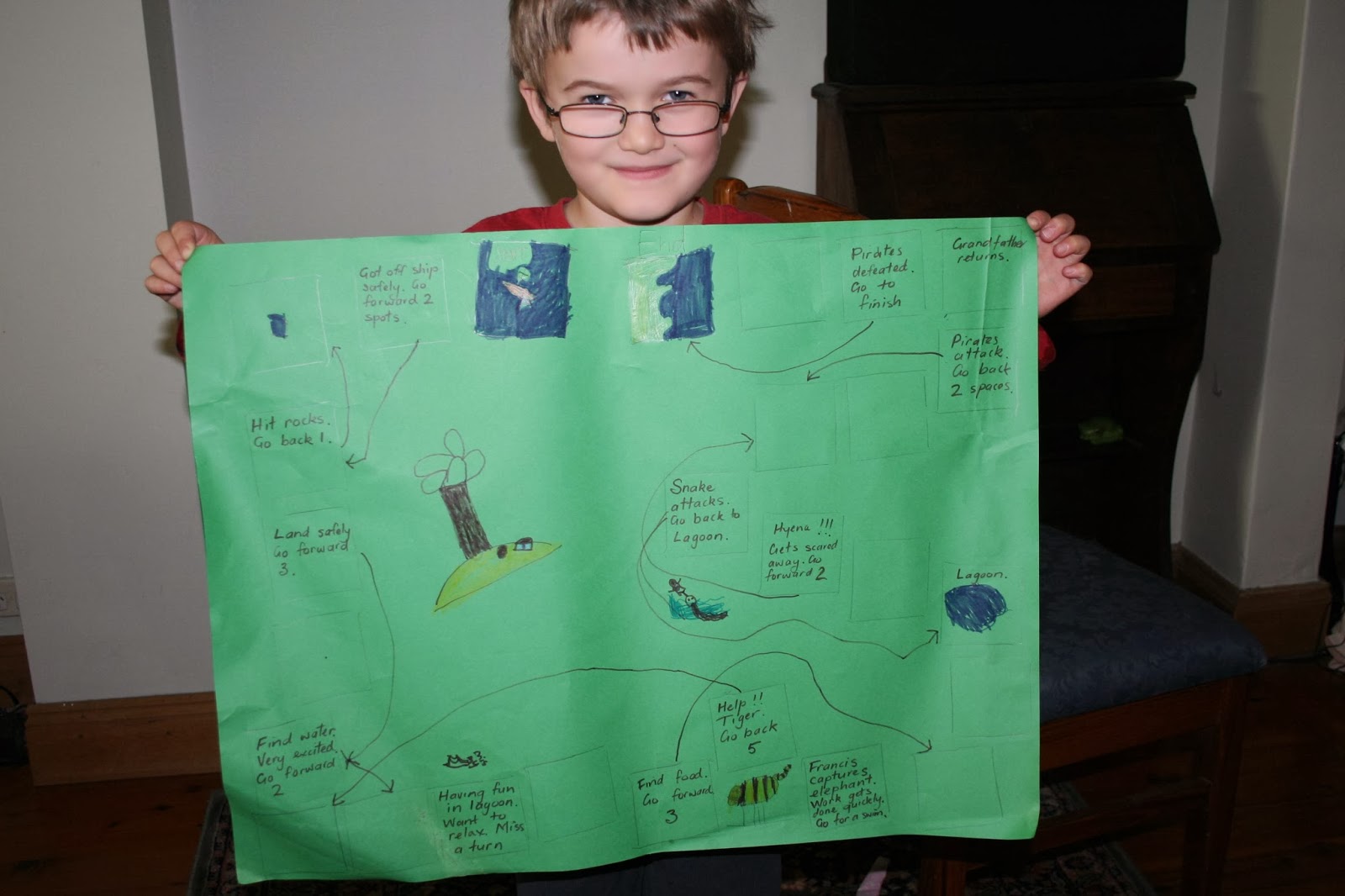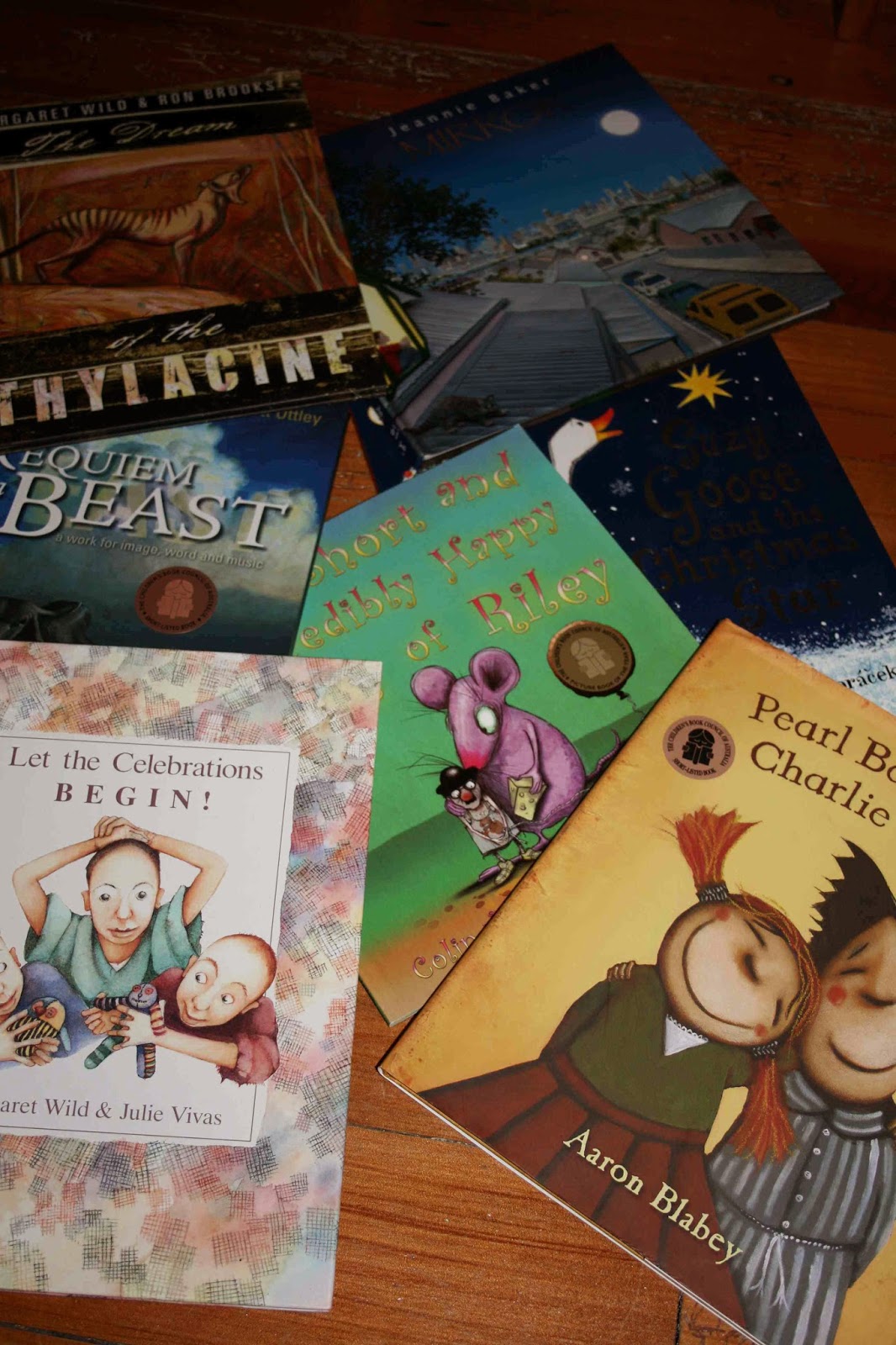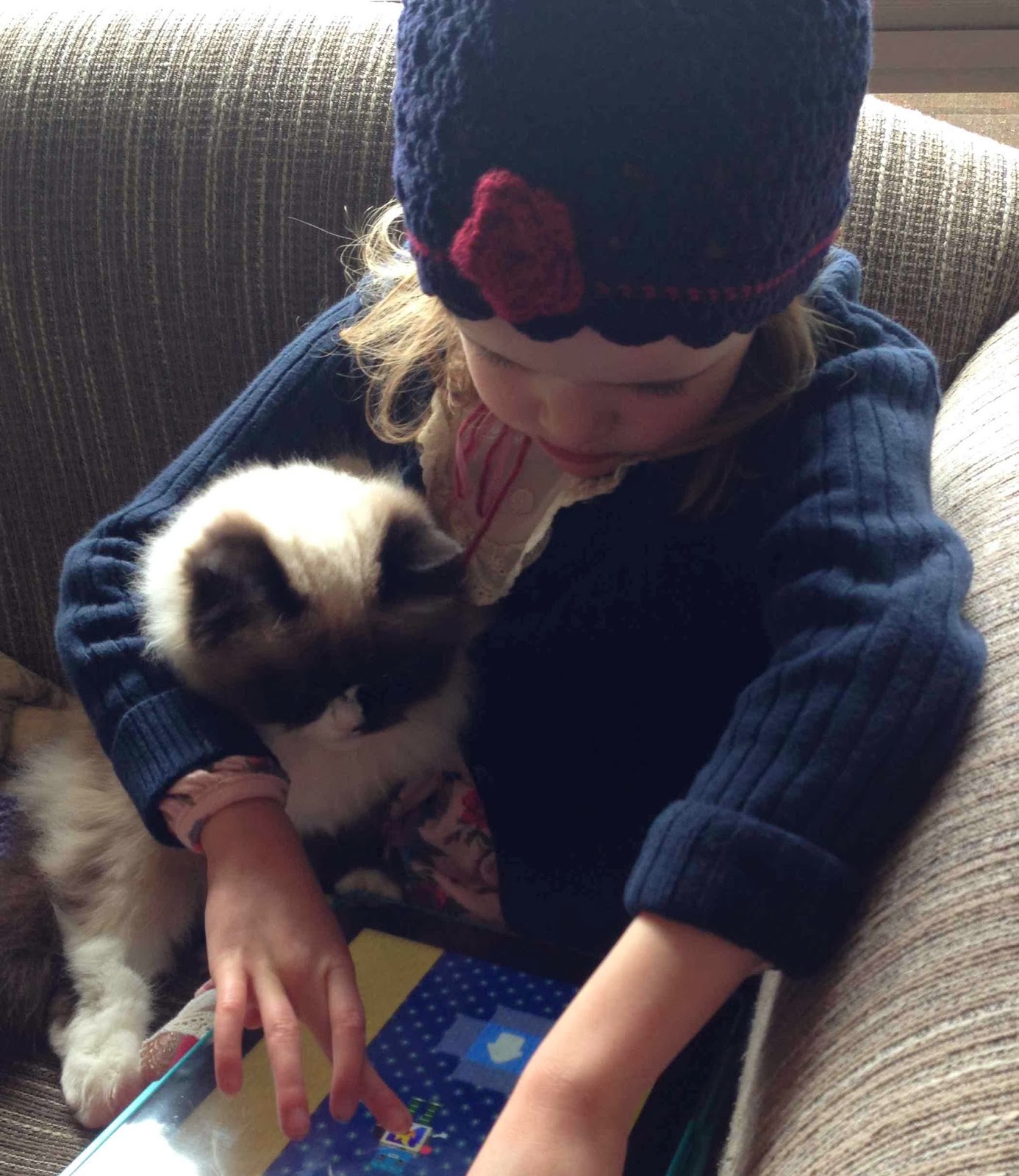1. 'Anzac Ted' by Belinda Landsberry (Exisle Publishing)
'Anzac Ted's a scary bear
and I can tell you why.
He's missing bits, his tummy splits,
he only has one eye'
That's how this beautifully illustrated book begins. A battered old teddy, that never wins a prize in the best toy competitions at school and frightens all the kids. But this bear has a secret. No one 'knows my Anzac's woes or just how brave he is.' Like the narrator's Grandpa, Anzac Ted is very old (100 this year in fact) and he made it through two wars as a mascot.
This is a lovely picture book for children aged 4-6 years that will allow very young children to access just as little of the Anzac legend.
2. 'One Minute's Silence' by David Metzenthen & illustrated by Michael Camilleri (Allen & Unwin)
This non-fiction, it is a moving and powerful
story about the meaning of Remembrance Day drawing on the ANZAC and
Turkish battle at Gallipoli. It is based on true events, but is written in a way that encourages the reader to imagine sprinting up the beach in
Gallipoli in 1915 with the fierce fighting Diggers. The reader is also encouraged to imagine
standing beside the brave battling Turks as they defended their
homeland from the cliffs above.
In the silence that follows a war long gone, the hope is that you might see what the soldiers saw, and feel a little of what the soldiers felt. And if you try, you might just be able to imagine the enemy, and see that he was not so different from 'his' enemy. The purpose is to challenge us to imagine, remember and honour soldiers on both sides of the conflict. All are heroes who shed their blood and lost their lives for their countries.
This is a very moving and powerful reflection on the meaning of Remembrance Day, which is brought to life by Michael Camilleri's incredible pencil drawings. Each double page spread is wonderful. One of my favourites is one that depicts the engineering, physics and impact of a bullet. I found this to be quite dramatic and challenging.
Readers aged 7-10 will enjoy this book.
3. 'The Afghanistan Pup' by Mark Wilson (Lothian Children's Books)
'The Afghanistan Pup' is book 4 in the Children in War Quartet by fabulous author and illustrator Mark Wilson. It is the story of an abandoned pup, a young girl in Afghanistan who just wants to go to school, and an Australian Soldier. It is a story of unexpected friendship, sacrifice, and finding hope in the strangest places.
The puppy is found abandoned by a little girl, Kinah. The backdrop and setting is the war in Afghanistan. When Kinah's school is bombed the dog is alone again until an Australian soldier rescues it. You'll need to read the book to find out how these stories are woven together.
Mark Wilson uses his wonderful art and well-chosen words to tell a great story with power. His illustrative work includes newspaper clippings, and varied beautiful images that are stunning. This is a special book that children aged 7-10 will enjoy.
4. 'War Brothers: The Graphic Novel' by Sharon E. McKay and illustrated by Daniel Lafrance (Walker)
This graphic novel has been adapted from the book 'War Brothers' written by Sharon McKay and published by Puffin in Canada in 2008. In its earlier form as a novel, it won the Arthur Ellis award for Juvenile fiction. This is a different kind of war. It is an evil war in the name of religion. It is not faith that drives these rebels; it is ideology and a quest for power. This is a fictional story based on real interviews in Uganda. While the graphic novel tells of unimaginable cruelty and violence, it is also a message of hope, courage, family and friendship. This is a war where rebels steal boys and girls from farms in Uganda driven by a militant named Joseph Kony who has terrorised parts of central Africa for almost 20 years. Young boys are forced to kill or be killed, and girls serve as slaves and 'wives'.
While the book is in a form that readers as young as 10-12 could read, its content is confronting means that for me, it is a piece of adolescent fiction. The illustrations are very effective. The darkly washed watercolours seem appropriate for an equally dark tale. It is a difficult story to read, but it offers an important caution against the excesses of ideology and religious extremism, and the failure of governments and nations to act quickly in the face of this type of evil. Suitable for readers 12+.
5. 'Emilio' by Sophie Masson (Allen & Unwin)
This is the fourth book in the popular 'Through My Eyes' series of adolescent fiction. It is a moving novel about one child's life in the middle of the drug war in Mexico. This of course is a different kind of war. Not a war fought over territory in the traditional sense but one that centres on control of places and the trafficking of drugs.
The central character, Emilio Garcia Lopez, starts out on an ordinary school day. That evening a knock on the door changes everything. The arrival of his police-officer cousin Juanita, flanked by a tall man in the uniform of the Federal Police, turns his normal day into the beginning of a long nightmare. Unidentified criminals, who appear to know a great deal about her and have mistaken her for a wealthy businesswoman, have kidnapped Emilio's mother in broad daylight from a hotel carpark. This is a dark novel that is engaging and challenging. Suitable for mature readers aged 13+.
6. 'Zafir' by Prue Mason (Allen & Unwin)
With his father in prison, his mother absent, his grandmother ill and not a friend left in the city, Zafir must stay with his Uncle Ghazi. But that too becomes dangerous as the city becomes more and more besieged. This challenging book about a boy trapped in the middle of a civil war in Syria, draws the reader in as we contemplate with Zafir the possibility that he might not survive long enough to be reunited with his parents. This is an excellent end to a wonderful series of books. Suitable for readers aged 12+.
7. 'To Brave the Seas: A Boy at War' by David McRobbie (Allen & Unwin)
This is another gripping tale from one of my favourite authors of historical fiction. It is the story of a teenager who ends up as a deck boy on navy ships, learning the ropes, fitting in with the crew, and facing wartime action in World War II.
The boys had been trained for emergencies. They had to know how to launch a lifeboat and to know where the life jackets were stored. But they were hardly prepared for the horrors before them. What an exploding torpedo do? And how will the ship and its crew behave when it sinks under you. No-one was able to prepare them for the blackness of night, or the horror of battle.
It is 1940, war rages and there is nothing to keep Adam Chisholm aged 15 years at home. So he joins Britain's Merchant Navy. His first ship takes him on a stormy Atlantic convoy where he faces seasickness, submarines, and shipwreck. In his remarkable sea journeys, Adam meets enemies face to face, and makes friends—some for a lifetime. The book includes a seven-page glossary of nautical terms and features WWII memorabilia throughout.
This is a very readable book that will keep readers aged 12+ engaged. It is beautifully written as with all of McRobbie's books. It tells the story of war time battles that shows how men of honour and courage experience war. The book describes life at sea with great detail. This feature of McRobbie's books invites the reader to 'become' part of the action and adventure. A great read.
8. 'Hope in a Ballet Show: Orphaned By War, Saved by Ballet' by Michaela & Elaine DePrince (Faber & Faber)
This is the true story of a young girl who grows up in war-torn Sierra Leone, Michaela DePrince. She witnesses atrocities that no child ever should. Rebels kill her father and her mother dies of famine. She is then sent to an orphanage, is mistreated and witnesses the brutal murder of her favourite teacher. But her life takes a turn for the better when after raising five children of her own Elaine DePrince travels to Sierra Leone to adopt an orphan living in a difficult place.
For Michaela her dream of being a ballet dancer was implanted in her when one day a wind blew a magazine through the orphanage that she was living in. Michaela picks it up and sees a beautiful image of a young woman dancing. She thinks to herself, one day I want to be that happy. And so a dream is born.Elaine DePrince and her husband adopt Michaela and her best friend and Michaela is able to take dance lessons for the first time. But her life in the USA isn't without its problems. The world of ballet that she finds is a racist one, and Michaela has to fight for a place amongst the ballet elite, hearing the words "America's not ready for a black girl ballerina".
Today, Michaela is an international ballet star, dancing for The Dutch National Ballet at the age of 19. This is a heart-breaking and yet inspiring autobiography by a teenager who shows us, that there is always hope where there is a dream, and the means and love to support you as you search for it.
Other relevant links
The Power and Place of Historical Narrative (HERE)
Historical fiction (HERE)



